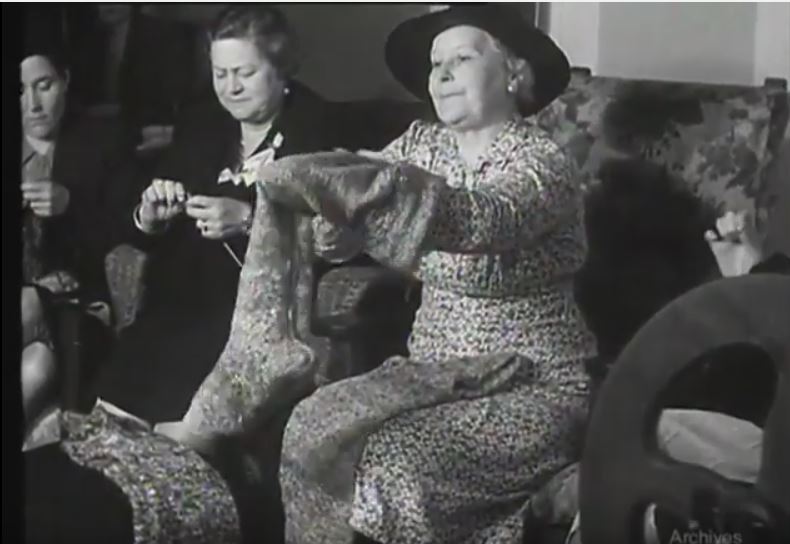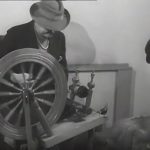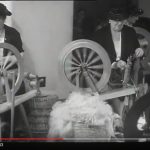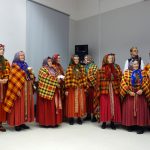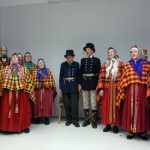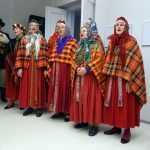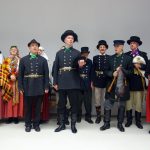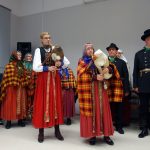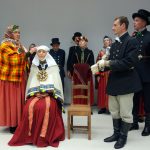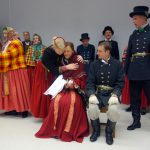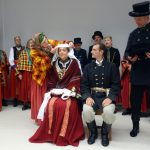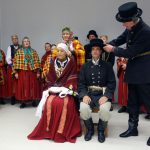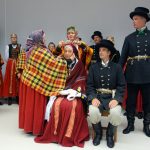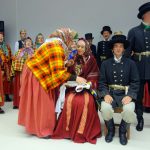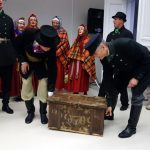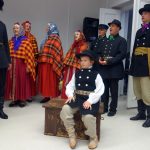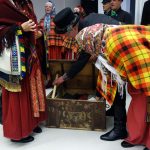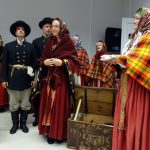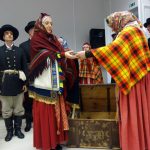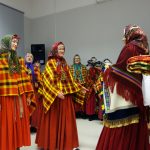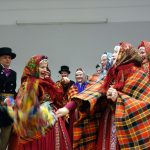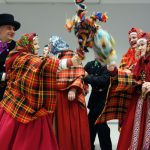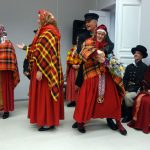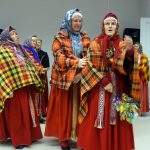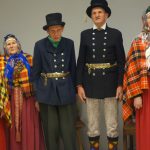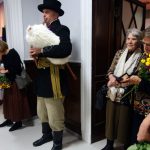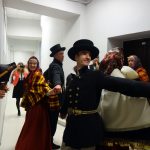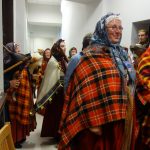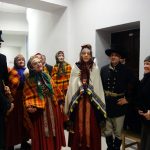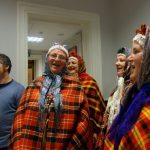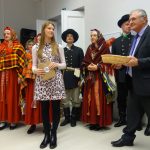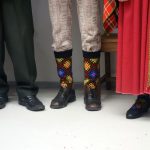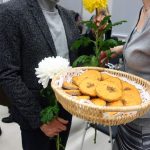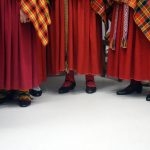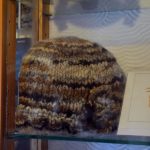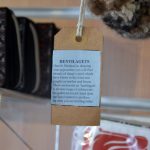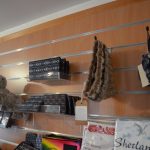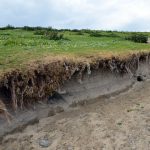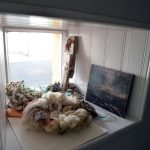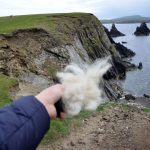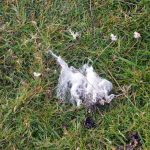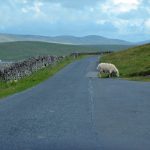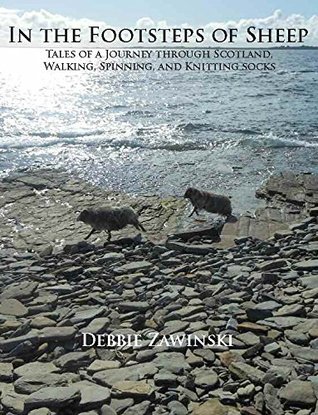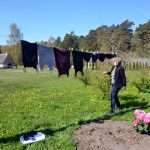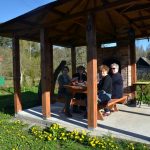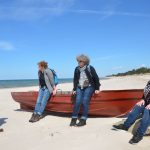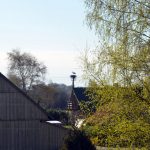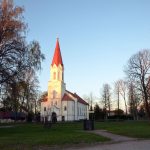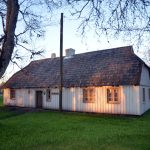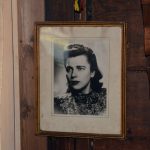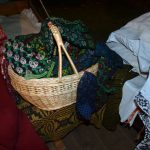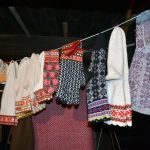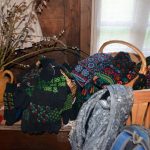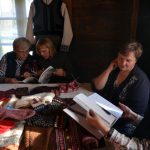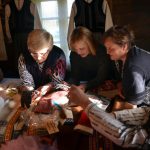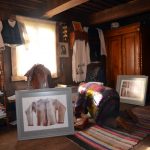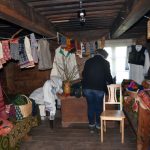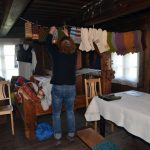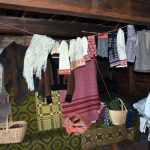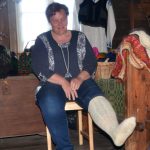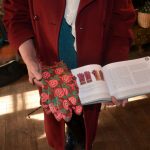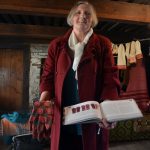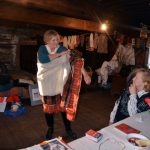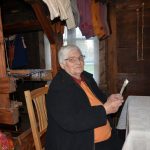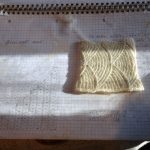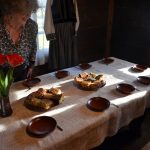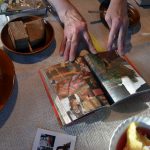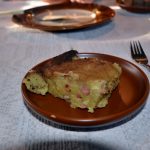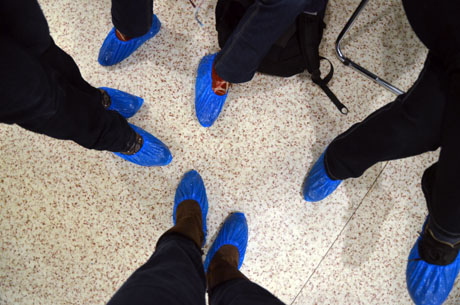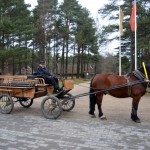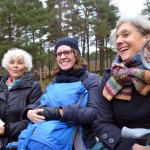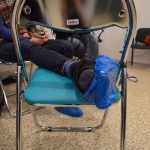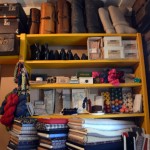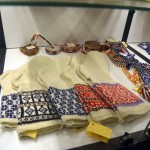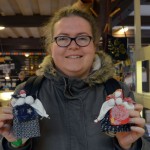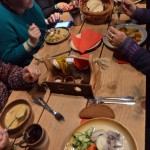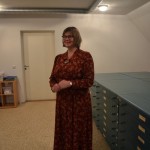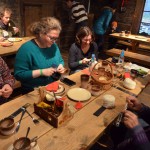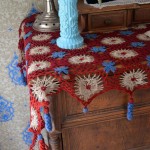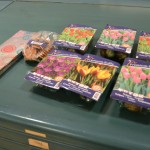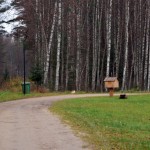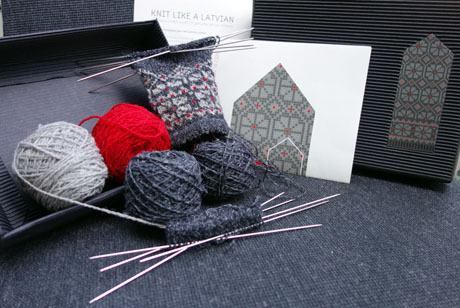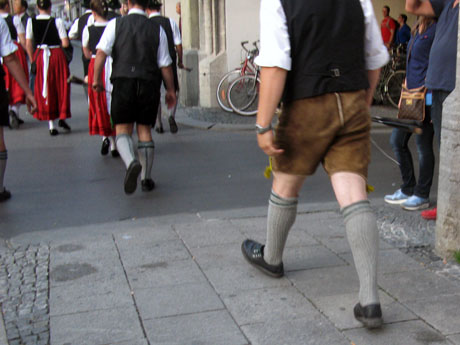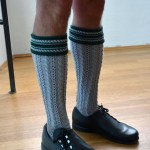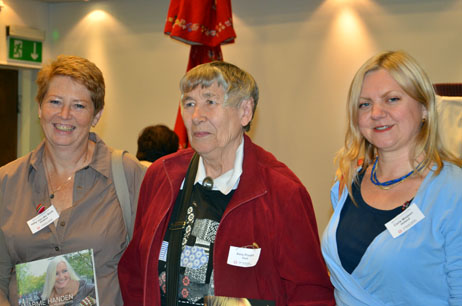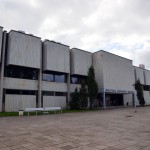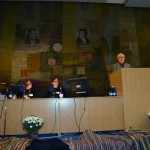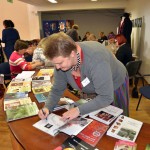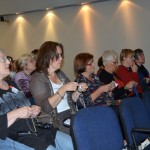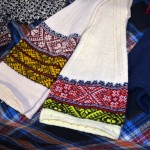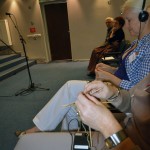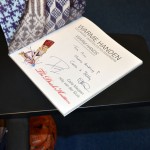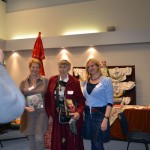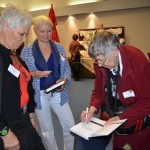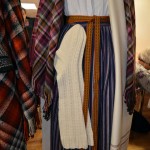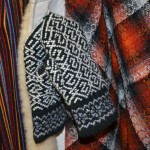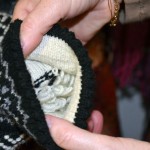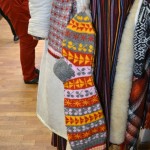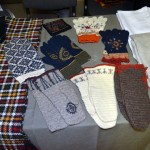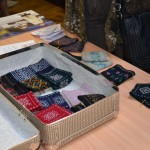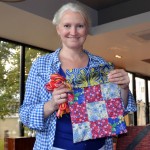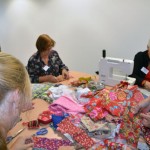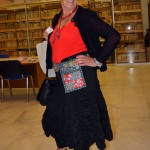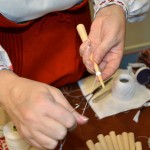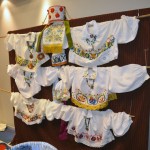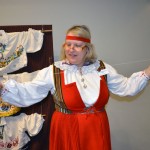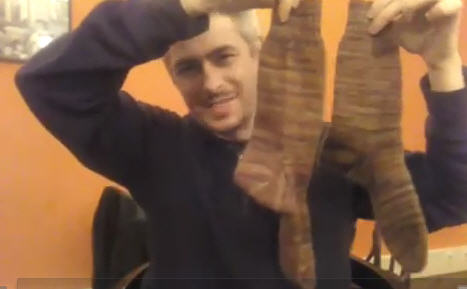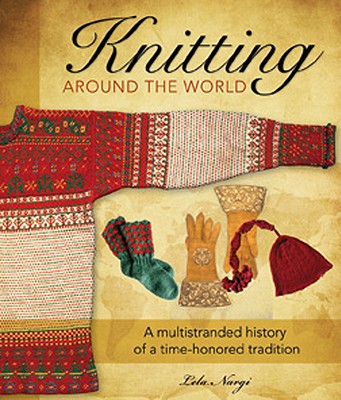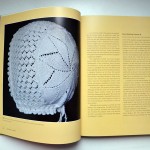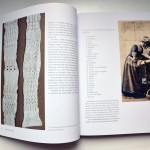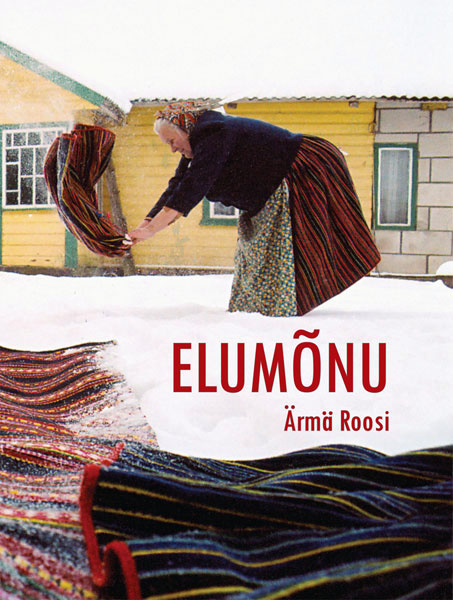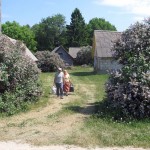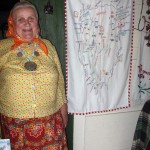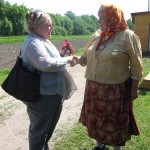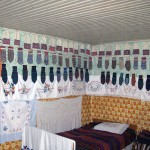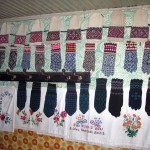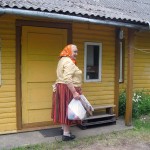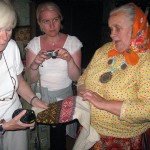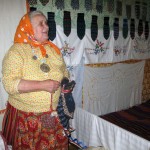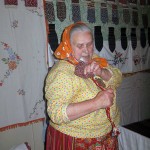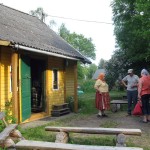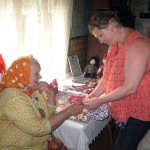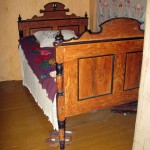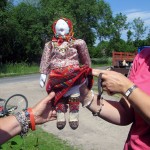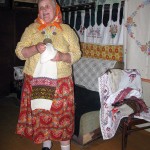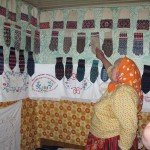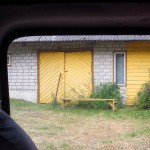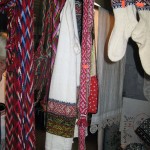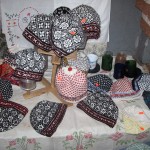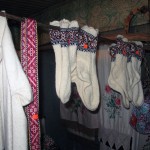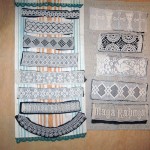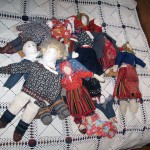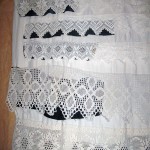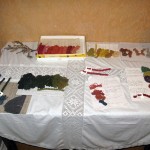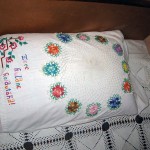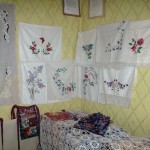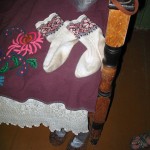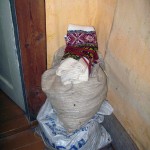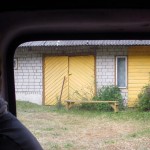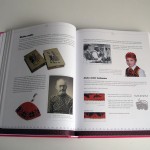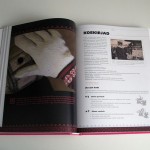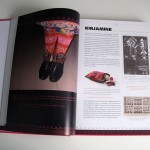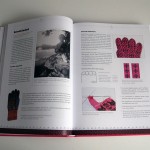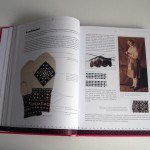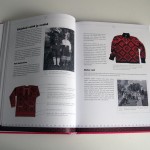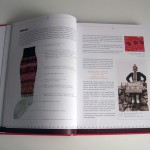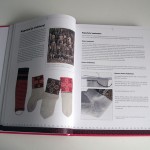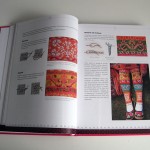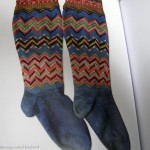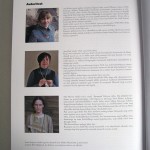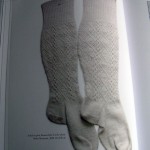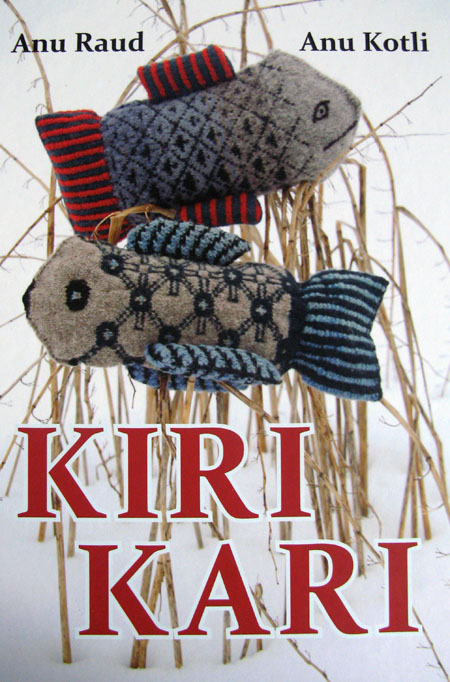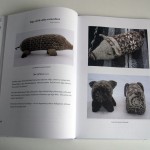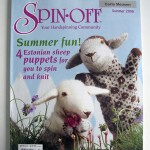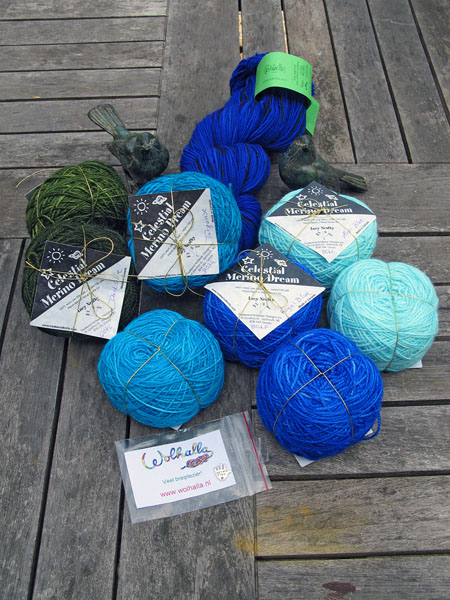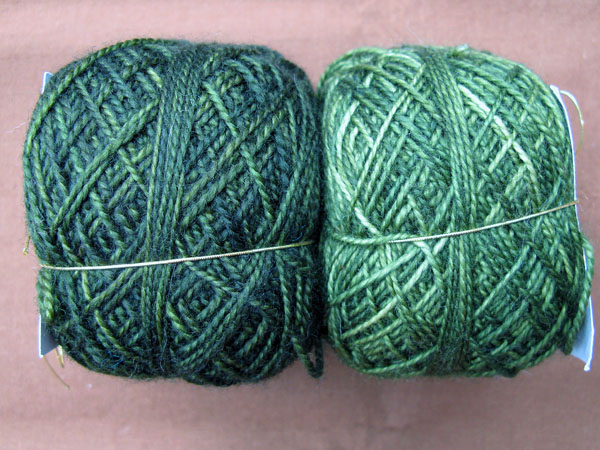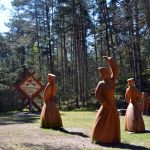 |
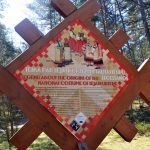 |
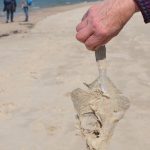 |
| Klik op afbeelding voor vergroting – Click to enlarge images |
In het zuiden van Letland vonden we in Bernati ons huis voor de komende dagen. We hadden geen adres gekregen, maar alles is er zo landelijk en beperkt, dat dit geen probleem was. Ook Mia Petra vond haar weg met haar auto naar ons mooie huis met open haard, vijf slaapkamers, een tuin met prieeltje, wasmachine, eigen poes en oranje badkamer. Dat oranje was wel handig, want het water ruikt er sterk naar ijzer, dat was even wennen. Mijn slaapkamer had een balkon, vanwaar je de ooievaren op hun nest kon zien.
Na lekker getuttel en ontbijten in de zon, zijn we door de duinen naar de zee gelopen. Eerst nog even een bordje volgen naar ‘iets’, wat een groep houten beelden bleek te zijn met een interessant verhaal over de oranje-rode rokken van de vrouwen van Nica, Rucava en Barta. Het strand was hemels mooi.
In the south of Latvia in Bernati we found in our home for the next few days. We were not given an address, but everything is so rural and limited there that this was no problem. Mia Petra also found her way with her car to our beautiful home with fireplace, five bedrooms, a garden with gazebo, washing machine, our own cat and an orange bathroom. That orange was convenient because the water smells strongly of iron, which was not easy getting used to. My room had a balcony from which you could see the storks in their nest.
After a relaxed morning with tasty breakfast in the sun, we walked to the sea through the dunes. First we followed a sign for ‘something’ which turned out to be a group of wooden statues with an interesting story on the orange-red skirts women from Nica, Rucava and Barta. The beach was heavenly beautiful.
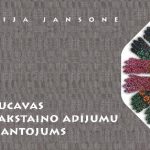 |
 |
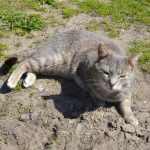 |
| Klik op afbeelding voor vergroting – Click to enlarge images |
Na een autotocht door de omgeving (we pasten met z’n vijven makkelijk in de de grote witte gloednieuwe pooierbak die we hadden gehuurd en waar menige Let kwijlend naar keek), gingen we naar Rucava, een idyllisch dorpje vlakbij Bernati. Ik had van te voren video’s gezien over het craft house daar. Wat was het bijzonder om er binnen te stappen! Er hingen zelfs portretjes van de vroegere vrouw des huizes. De breisters uit het dorp kwamen ons ontmoeten en brachten heerlijk traditioneel eten mee. Sandra had roggebrood gebakken, er was honing uit het dorp, aardappeltaart en daarna een toetje met vruchtensap. Zálig! En zo hartelijk allemaal, we voelden ons zó welkom. Ik kreeg zelfs het proefje cadeau waar ik erg in geïnteresseerd was, zo lief! Tijdens het eten werden we toegezongen, echt een kippenvelmomentje. Ze hebben het niet breed, maar dat wat ze hebben, willen ze zo graag delen. Wij deelden ook, cadeautjes en voor de oprichtster van de groep een vergulde breinaald. En natuurlijk Warme Handen en Lekker Warm! voor hun bibliotheekje.
In het craft house was veel handwerk en klederdracht te zien, zowel dingen die te koop waren, als om te bekijken. Ook de wanten en handschoenen uit het boekje Rucavas Rakastaino Adijumu Mantojums, waaronder de bijzondere roze handschoenen met rozen, waarschijnlijk afkomstig uit de Balkan, die mogelijk de kleur- en motiefkeuze voor vele andere breisels hebben beïnvloed. Ook hadden de breisters spullen van zichzelf meegenomen om te laten zien. Bijzonder waren de vesten in patentsteek. En wat Mia Petra daar zat te doen, wie zal het zeggen? 😉
Op weg naar huis stond de kilometerstand op 1000,1 km, en er zou nog meer bijkomen. Wat hebben we veel gezien!
After a road trip through the area (all five of us fitted easily in the big brand new shiny car we had rented and f0r which many Latvian men drooled when looking at it), we went to Rucava, an idyllic village near Bernati. Before leaving I had on seen videos on the craft house there. What was special to step over the threshold! There even hung portraits of the former mistress on the walls. Knitters from the village came to meet us and brought delicious traditional food with them. Sandra had baked rye bread and there was honey from the village, potato cake and even a dessert with fruit juice. It tasted so good! And all the women ware so nice, we felt very welcome. I even got the sample that I was very interested as a present, so sweet! During dinner we were serenaded, a real goosebumps moment. They are not rich, but what they have, so they want to share. We also shared, presents and a gilded needle for the founder of the group. And of course Warm Hands Warm and So Warm! for their small library.
In the craft house was so much to see, many handicraft item, costumes , some things were for sale, some where there for show. The mittens and gloves from the booklet Rucavas Rakastaino Adijumu Mantojums, including the special pink gloves with roses, probably originating from the Balkans, which may have influenced the color and pattern choice for many other knitwear. Also the knitters had brought stuff themselves to show. Unusual were the jackets in Brioche stitch. No, I don’t have a clue what Mia Petra was doing there. 😉
On the way home the mileage was at exactly 1000.1 km, and we had some more travelling to do. We have seen a so much!
